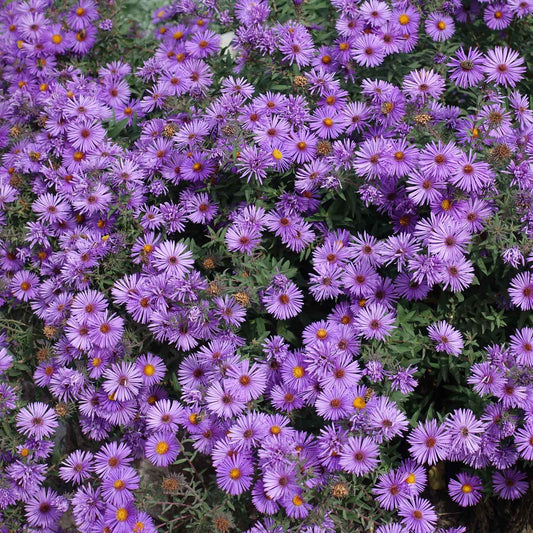-
main-collection-product-grid

New England Aster Seeds
This native perennial wildflower grows well beyond New EnglandNew England Aster Seeds
This native perennial wildflower grows well beyond New EnglandRegular price As Low As $7.99Regular priceUnit price per
About our heirloom aster seeds
- 1 heirloom aster seed varieties
- Cultivated worldwide as an ornamental plant
- Great for container gardens and cut flowers
- Attracts pollinators
Choose the best heirloom aster for your garden
With vibrant fall hues in pinks, purples, blues, and white, heirloom asters are the grand finale of the perennial garden. They're also one of the few remaining excellent food sources for bees, butterflies, and other pollinators. Gardeners get a two-for-one deal with beautiful blooms and a flurry of fascinating insects. It now has roughly 170 species, while it used to have nearly 600. The name derives from an old Greek term that means "star," referring to the flower's form. New England aster and China aster are the two most common heirloom aster varieties. When choosing an aster for your garden, consider the height, bloom color, and bloom duration that you want, as these differ from one aster to the next.
The Appearance of Heirloom Aster Flowers
Asters have both a pistil and stamens, making them bisexual. Their flower is made up of a cluster of very small tubular flowers that are arranged in a central disk and then encircled by ray flowers. The disk flowers are frequently a different color than the petals, making the entire flower head appear as a single bloom with the core disk surrounded by various colored petals.
When and how to plant heirloom aster seeds
Heirloom asters can be grown from seed or be propagated. After the last spring frost, asters should be planted. Start your seeds indoors six to eight weeks before you plan to transplant them outside. When choosing a location to grow asters, choose one that receives full sun (six to eight hours per day) to partial sun (four to six hours per day). Make sure you don't choose a location where the soil dries out quickly. Plant seedlings that were started indoors six to eight inches apart in the garden. Spread the seeds on the surface of damp soil to direct sow them. Repeat this procedure every 10 to 14 days to ensure a longer blooming season.
Maintaining heirloom aster plants
It's not difficult to keep heirloom asters alive. It is critical, however, not to allow the soil to dry out. To keep weeds at bay and maintain moisture levels, mulching around each plant is an excellent idea. If any of the higher flower stalks begin to fall over, try using a stake. To ensure optimum airflow between the plants, try not to crowd the aster. Planting your heirloom asters in new spots each year helps to prevent pests and illness from spreading.
For more information about planting, growing, and caring for heirloom asters, see the Aster Seeds Planting Guide.
